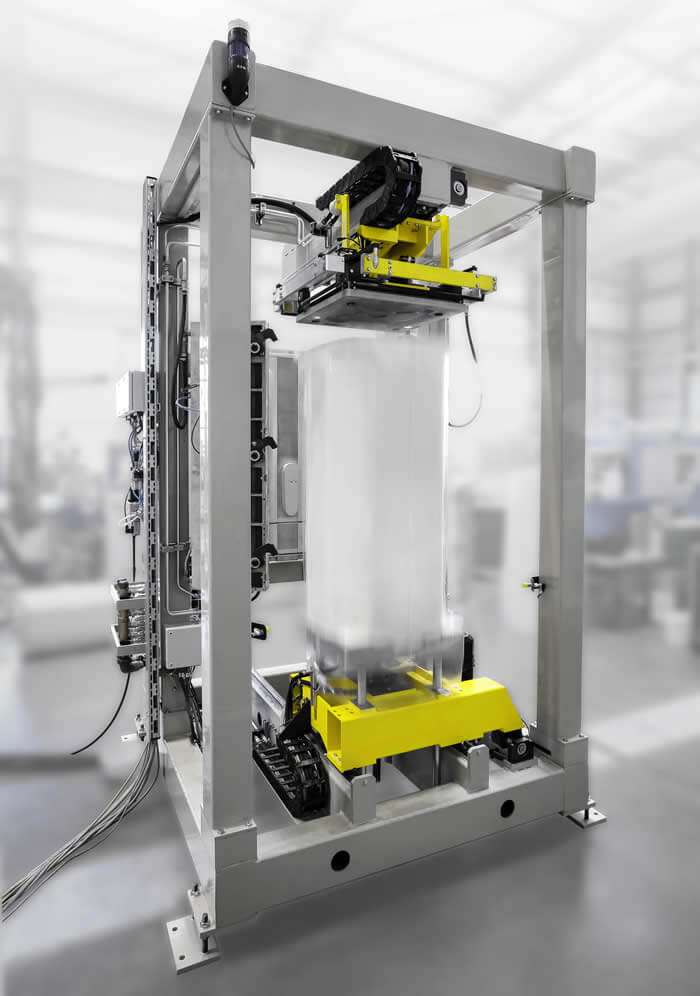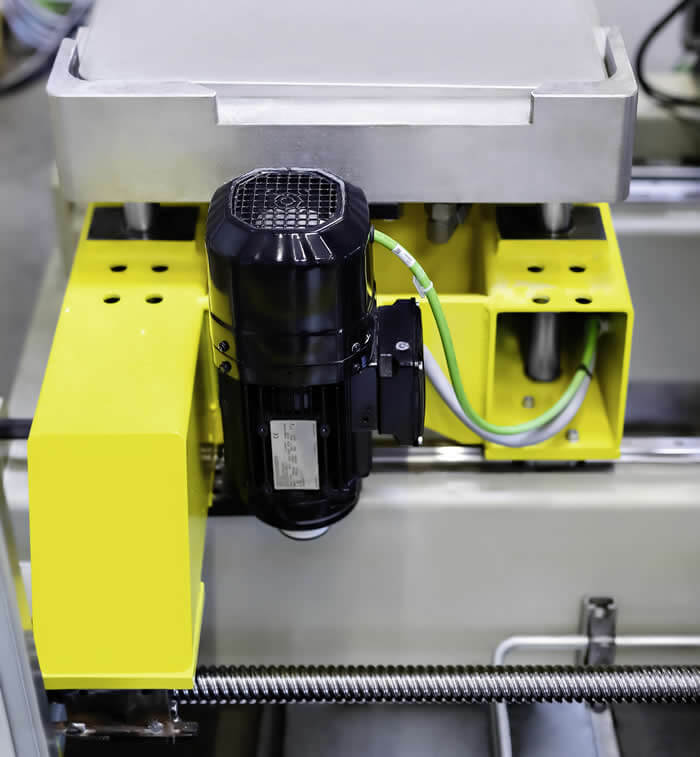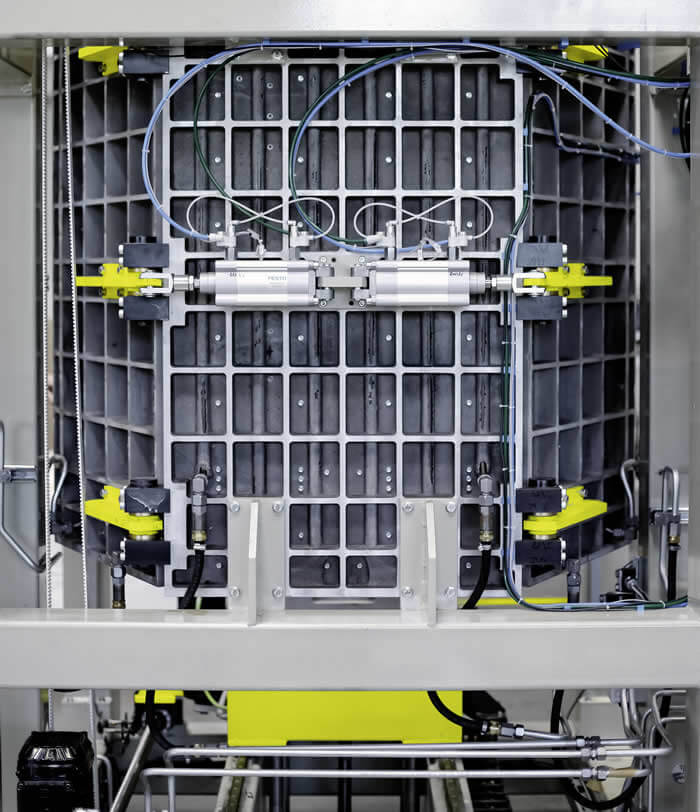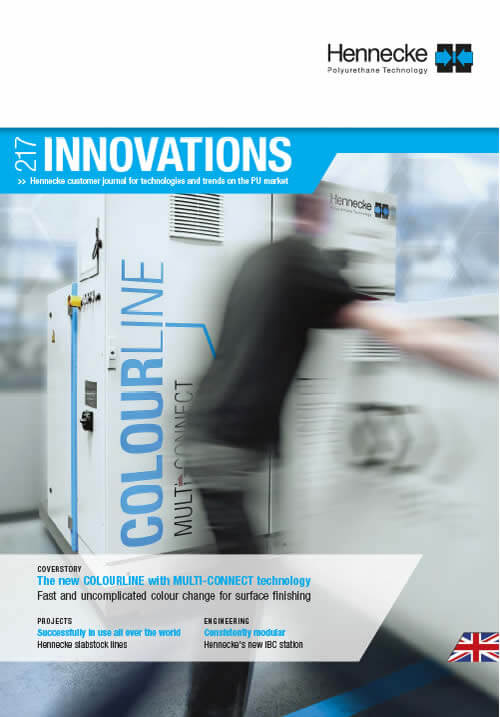High-quality insulation for highest energy efficiency
New Hennecke horizontal carriage mould carrier for semi-automatic production of hot water tanks
In modern house technology, going without a hot water tank is unthinkable. With state-of-the-art devices, contractors and heating modernisers can provide hot water with great energy efficiency. Thanks to high-quality insulation, hot water tanks impress with very low heat loss. To further reduce this heat loss, Daikin Europe from Oostende in Belgium recently achieved insulation of its hot water tanks with the help of polyurethane and a Hennecke production plant, which was perfectly adapted to the high requirements of the customer.
The energy efficiency of its product range is top priority for Daikin. Even proven processes are therefore the focus of constant optimisation. At K Trade Fair, the heating and climate specialist came to Hennecke with the idea of foaming the insulation of the hot water tank for its new generation Altherma floor-standing heat pump system with polyurethane. The insulation of the previous generation was carried out by assembly of styrofoam half shells. To design the process as efficiently as possible, Hennecke developed an innovative mould carrier concept in collaboration with the customer. It enables a highly efficient foaming process, thus realising perfectly insulated hot water tanks without thermal bridges.
In the new mould carrier plant, the hot water tank is foamed upside down. It is inserted outside of the mould between the upper and lower mould. The plastic upper tank cover is in the lower mould, because this material has lower thermal conductivity which additionally improves the reaction process. The upper mould uses magnetic force to hold the steel floor along with connections and base joints. Then the lower mould moves up electromotively via a spindle drive and clamps the tank between the floor and cover.
Instead of applying a release agent in the mould, a tube made of plastic film is pulled over the tank which separates the mould and polyurethane during the foaming process. The complete omission of release agent not only makes the process safer but also more environmentally friendly. The clamping device then moves the tank horizontally into the open mould. This is likewise realised via an electromotive spindle drive. The mould is closed and then locked via pneumatic cylinder. The arising internal mould pressure is thus diverted uniformly in the closed mould. The fluid reaction mixture then enters the film tube from the top by means of the manually guided type MT22 mixhead. After the foam has finished expanding and has cured, the mould opens and the clamping device drives the hot water tank completely out of the mould for easy removal. The bottom and cover are then firmly connected to the hot water tank by the polyurethane foam, thus ensuring stability along with optimal insulation.
A TOPLINE high-pressure metering machine of size 650/650 assumes the metering task in the plant network. The metering unit is designed for processing the environmentally friendly blowing agent HFO. The plant also has an automatic formulation adjustment for various product sizes. Hennecke's new IBC station is responsible for the optimal conditioning of the raw materials (see page 20). In Daikin's case, the IBC containers are not only used as transport containers, but also as storage containers at the same time. This effectively reduces costs for raw material storage.
Daikin produces this type of hot water tank in sizes of 180 and 230 litres. Because the two variants are different lengths but have the same diameter, the plant can produce both sizes with little changeover work on the mould. To foam around the smaller tank, the lower mould extends higher for clamping. When foaming is finished, operators install the Daikin heat pump module and attach the exterior sheet metal cladding. After that, the unit is ready for packaging. Daikin plans production of about 25,000 devices per year with the new plant technology.


Daikin
Daikin Europe is a one hundred per cent subsidiary of Daikin Industries Limited, a multi-national company listed on the Japanese stock exchange and globally leading manufacturer and provider of heating, ventilation and air conditioning plants and devices. In the entire Europe group, there are almost 7,000 employees at the company headquarters, 12 production facilities, 17 subsidiaries and 3 sales branches.





